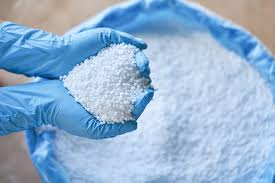As a result of a significant push for domestic manufacturing, India would no longer import urea by the end of 2025, according to Chemicals and Fertilisers Minister Mansukh Mandaviya. The minister stated that fertiliser availability is critical to Indian agriculture in a conversation with PTI.
According to him, chemical fertilisers have been used in the nation for the past 60–65 years in an effort to increase crop yield.
The government is currently working to promote alternative fertilisers including nano liquid urea and nano liquid di-ammonium phosphate (DAP), according to Mandaviya.
“Using different fertilisers improves the health of the soil and crops. We’re pushing it,” he declared.
When asked how the Modi administration intends to eliminate urea import dependency, Mandaviya responded that there are two strategies in place to achieve self-sufficiency in urea manufacturing.
The minister emphasised that in addition to restarting one factory, the government has brought four closed urea factories back to life.
He mentioned that India needs about 350 lakh tonnes of urea every year to suit its own needs.
According to Mandaviya, installed domestic production capacities have grown from 225 lakh tonne in 2014–15 to over 310 lakh tonne.
“At present, the gap between annual domestic production and demand is around 40 lakh tonne,” stated the minister.
After the fifth plant is put into service, Mandaviya predicted that the country’s urea production capacity will reach about 325 lakh tonnes annually. The goal is to replace the 20–25 lakh tonnes of conventional urea with nano liquid urea.
“We have a very clear agenda. “Modiji will eliminate the nation’s urea import reliance by the end of 2025,” he declared, adding that urea import costs would drop to zero.
The government reports that urea imports decreased from 91.36 lakh tonne to 75.8 lakh tonne in 2022–2023.
In 2020–21, 91.23 lakh tonnes were imported; in 2019–20, 74.81 lakh tonnes were imported; and in 2018–19, 98.28 lakh tonnes were imported.
Mandaviya emphasised that throughout the past ten years, the Modi administration has made sure that the agriculture industry has a sufficient supply of fertilisers.
He stated that by raising the subsidy on essential agricultural nutrients, the Centre also shielded Indian farmers from a dramatic increase in fertiliser costs on international markets.
In contrast to the revised expectations of Rs 1.89 lakh crore for the 2023–24 fiscal year, the government has allotted a fertiliser subsidy of Rs 1.64 lakh crore for 2024–25.
The fertiliser subsidy skyrocketed to Rs 2.55 lakh crore in 2022–2023.
Due to the rise in demand for nano liquid urea and government initiatives to discourage the use of chemical fertilisers, Mandaviya said last month that India’s consumption of traditional urea is anticipated to have decreased by 25 lakh tonnes during the previous fiscal year.
In 2022–2023 there were 357 lakh tonnes of urea consumed.
A few years ago, the cooperative organisation IFFCO introduced nano liquid urea. It has also given some other businesses the technology they need to establish nano urea plants.
Between August 2021 and February 2024, 7 crore 500 ml nano urea bottles were sold by the end of the sales period. One bag (45 kg) of traditional urea is equal to one bottle of nano urea.
The ‘PM Programme for Restoration, Awareness, Nourishment and Amelioration of Mother Earth’ (PM-PRANAM) initiative was also introduced by the government to encourage states and Union Territories (UTs) to use chemical fertilisers sparingly and to encourage the use of alternative fertilisers.

A legally specified Maximum Retail Price (MRP) is paid to farmers who receive urea under the Urea Subsidy Scheme (USS). Manufacturers receive payment for the difference between the manufacturing cost and the MRP of urea.
Additionally, the Nutrient Based Subsidy Policy guarantees farmers have access to P&K (phosphatic and potassic) fertilisers at fair costs by notifying them of a set amount of subsidy on a yearly or semi-annual basis.
Imports of urea go through a government account.
Nonetheless, the Nutrient Based Subsidy (NBS) Scheme covers all P&K fertilisers (DAP, MOP, and NPK) under an Open General Licence (OGL), and the fertiliser firms import them on terms that are profitable for them.
For feedback and suggestions, write to us at editorial@iifl.com
Related Tags

Invest wise with Expert advice
![]() IIFL Customer Care Number
IIFL Customer Care Number
(Gold/NCD/NBFC/Insurance/NPS)
1860-267-3000 / 7039-050-000
![]() IIFL Capital Services Support WhatsApp Number
IIFL Capital Services Support WhatsApp Number
+91 9892691696
IIFL Securities Limited - Stock Broker SEBI Regn. No: INZ000164132, PMS SEBI Regn. No: INP000002213,IA SEBI Regn. No: INA000000623, SEBI RA Regn. No: INH000000248
ARN NO : 47791 (AMFI Registered Mutual Fund Distributor)

This Certificate Demonstrates That IIFL As An Organization Has Defined And Put In Place Best-Practice Information Security Processes.